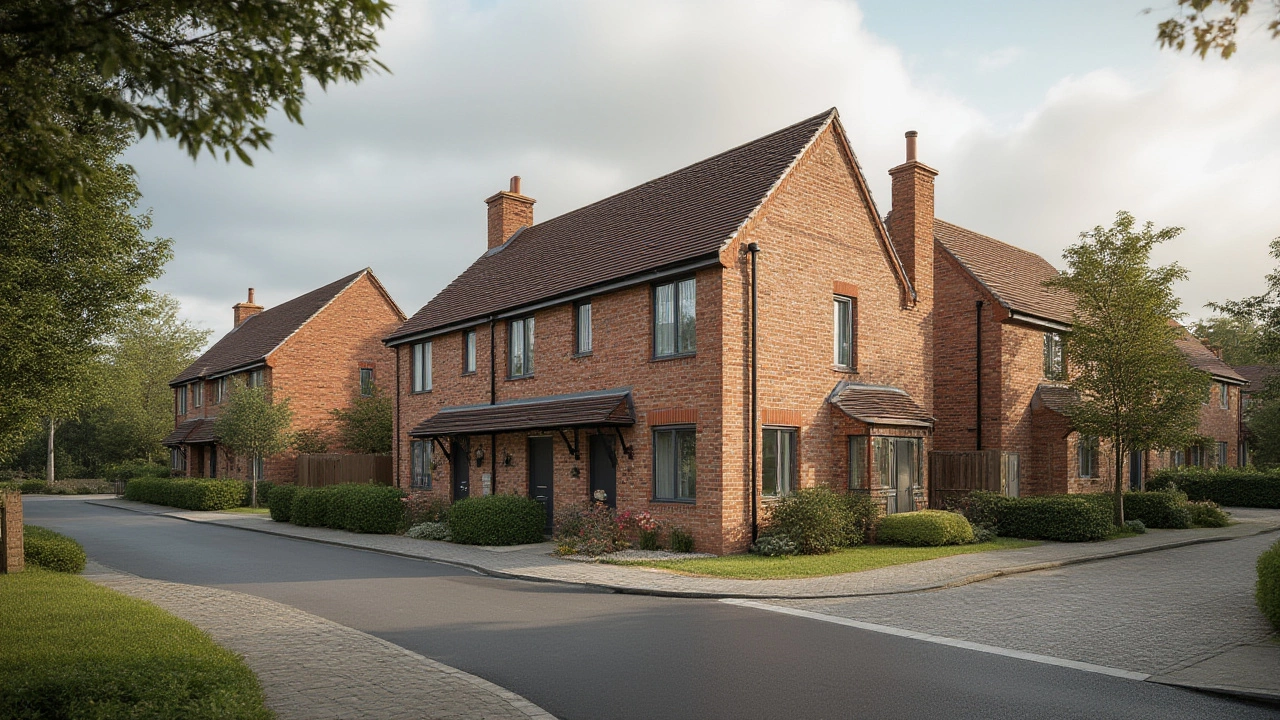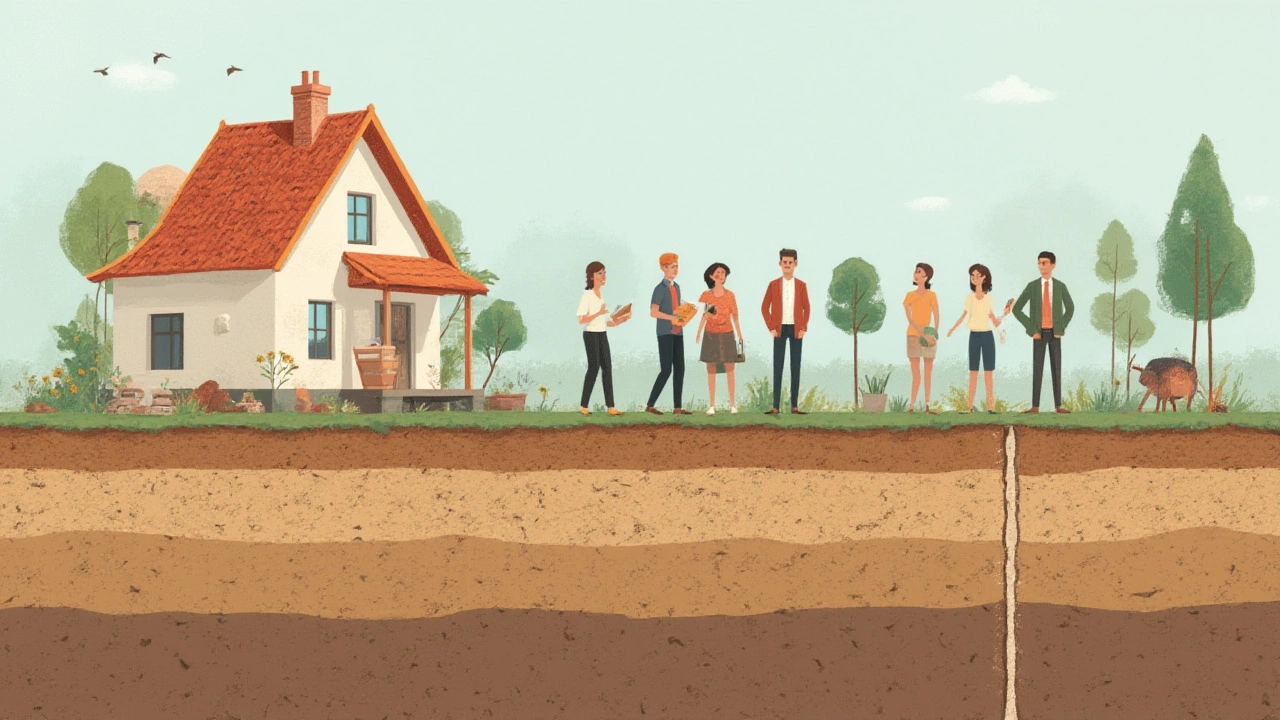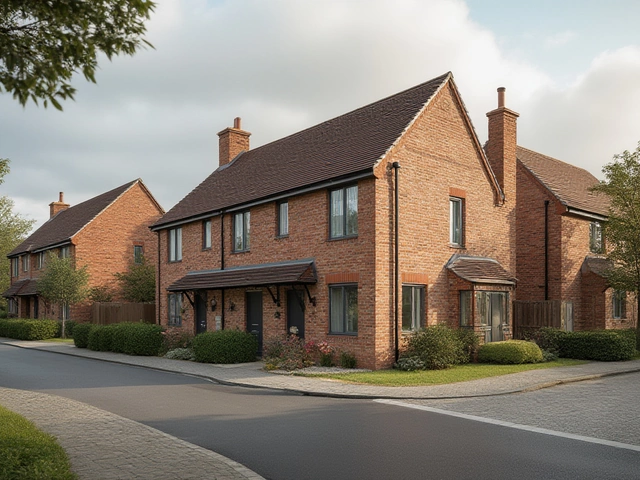How Long Should You Wait for a New Building to Settle? Construction Timelines Explained

No one tells you this when you buy or build a new home: every new building is a bit like a teenager—growing, shifting, finding its place in the world, and maybe squeaking along the way. While most folks are busy picking out paint colors, the ground beneath that shiny new structure is quietly getting used to a new resident. Cracks and creaks aren’t always disasters or signs of poor workmanship, but sometimes, just early signs that your building’s bones are adjusting. Imagine moving into a place and hearing a ‘pop’ at midnight. Normal? Let’s unpack what’s happening below your feet.
What Does “Settling” Really Mean?
Settling tends to get a bad rap, often confused with foundation failure or dangerous movement. But let’s get clear: building settling is the natural, slow shifting and compacting of a structure as it adjusts to its new environment. Soil compresses under weight. Materials like concrete, plaster, and wood change shape as they dry and cure. A lot of people I know, including my own spouse Natasha, have worried when the house creaks or a fine crack appears in the hallway. Most of the time, it’s just the house doing what every new house does—getting comfortable.
Soil makes a big difference here. On sandy soils, a building might settle just a little, while clay soils can lead to visible shifts as moisture comes and goes. Heavy rains, droughts, and even tree roots nearby can alter settlement patterns. That’s why you might hear, years after construction, the odd sound or spot a small crack by the window. Builders and engineers don’t panic. In fact, the National Association of Home Builders says that minor cracks and small separations inside your home (think: less than a quarter inch) are par for the course during the first couple years.
Not all settling is harmless, of course. The key difference is between uniform and differential settlement. Uniform means the whole foundation lowers at the same rate. Differential settling is less friendly—this is where one part shifts more than the rest. That can create bigger issues if left unchecked. But, in most new buildings, uniform settling dominates, and it’s usually nothing to lose sleep over.
One fun fact: concrete cures for decades, not just days. Despite feeling rock-solid within 48-72 hours, it never really stops hardening in minute ways. This long-term subtle change is part of why even older buildings creak on cold nights.
If you’re hearing little noises or notice tiny cracks in the paint, you’re living the story of every new homeowner. Here’s one from an expert:
"Settlement cracks are a natural part of the building process. Most of them will appear and stabilize as the house completes its first few years." — Dr. Richard Kamin, structural engineer, 2023
Keep an eye on anything dramatic, but don’t panic if your home is just finding its groove.
The Settling Timeline: How Long Does it Take?
Here’s the thing—people always want an exact number of days or months. But the real answer is more of a range and depends on factors like climate, soil, construction type, and building size. Usually, new buildings settle most in their first 12 to 24 months. Why that range? Well, construction materials release excess moisture, soil shifts to support its new load, and the seasons change. Heat, cold, even shifting underground water tables all play a part.
Let’s add some numbers you can actually use. According to the American Concrete Institute, new residential buildings settle about 1/8" to 1/4" in the first year alone, which is considered completely normal. Commercial structures, especially those with deep foundations, might settle even more, but engineers account for it during design. The first big movements usually slow down after the second year, and after year three, things are mostly calm. If you’re building on reclaimed land or heavy clay, you might see settling stretch to 5 years or more, but in most cases, the action tapers off within two.
Seasonal changes can be dramatic. A friend built on shrink-swell clay outside Houston, and the first wet summer after moving in, every new crack was a source of panic. Turned out, the soil had doubled in size after it rained, and then shrunk as the ground dried out. Their house didn’t need saving; it just needed time. Classic case of seasonal settling, which is especially wild in regions with big swings in weather.
Here’s a handy summary in table form for timeline estimates by building type and soil condition:
| Building Type | Soil Condition | Expected Settlement Time |
|---|---|---|
| Single-Family Home | Sandy/Stable | 12-18 months |
| Single-Family Home | Clay/Silty | 12-36 months |
| Large Commercial | Sandy/Stable | 18-24 months |
| Large Commercial | Clay/Silty | 2-5 years |
| Apartment/High-Rise | Any | 2-5 years |
Don’t get spooked by those upper values—most everyday homes settle enough to finish worrying about it within two years. The rest is slow-motion, almost invisible stuff that only shows up in close inspection.

What Are the Signs a New Building Is Settling?
The signs are usually pretty subtle, but some can catch you off guard if you’re not expecting them. Drywall cracks—especially at the corners of doors and windows—are probably the most common. Little gaps might appear between baseboards and floors, or door frames might need a tweak because doors stick or won’t latch right anymore. Those fine ‘spiderweb’ cracks in paint? Also usually nothing serious.
Floor creaks are next. You step on a brand new board in your living room and it sounds like a haunted house. Nope, it’s just the floor meeting and greeting its new environment. Floor tiles might develop thin hairline cracks if the subfloor moves just a smidge.
Now, if you own a place with a slab foundation, it might hum or pop, especially on cold nights, as things expand or contract. I remember Natasha telling me she worried the first time she heard ours snap at 2 a.m.—turns out it was just thermal contraction, all part of the process.
Here's a non-exhaustive list:
- Small cracks near window/door frames
- Tiny gaps between trim and walls/floors
- Doors or windows that stick, especially after weather changes
- Little popping or creaking sounds in the evening, as temperatures drop
- Minor cracking in floor or wall tiles
None of these are urgent unless they get dramatically worse or wide—think cracks over 1/4 inch, or diagonal cracks extending across walls. If windows or doors won’t open at all, or if the ceiling or floor visibly sags, that’s time to get a professional involved. Another red flag? If your settling is happening after year five, not just in those first couple of years.
Keep a small notebook or take photos every few months. Fast-moving cracks or new sticking points in winter versus summer usually mean the home is still adjusting to seasonal changes. If you see rapid changes, call in an engineer. If it’s slow and steady, see it as your house’s way of becoming part of the neighborhood.
How to Manage and Minimize Settling Issues
You can’t really avoid settling, but you can manage it so it’s never more than a mild annoyance. Start with soil preparation. A lot of the trouble I see comes from builders skipping thorough compaction, especially on sites with backfilled soil. Good builders will test and compact soil in layers before even starting on the foundation—this can take days, but pays off big time.
If you’re building, ask your contractor about soil reports. Engineers use something called a geotechnical survey—especially if you’re building on clay, loose fill, or near water. These tests show how much the ground might move and what foundations to use. Slab-on-grade, crawl spaces, and even deep piers all have their place. In unstable ground, a slab might not be your best choice.
Water is the sneaky villain in settling problems. Poor drainage can leave soils soggy, causing uneven settlement. Install gutters and make sure downspouts carry water at least five feet from the house. Keep landscaping low near the foundation—don’t pile mulch up against the walls or let flower beds trap water. Even simple tweaks, like keeping tree roots 10-15 feet away, can make the difference between stable and shifting floors.
Don’t rush interior finishes. Plaster and paint need time to dry as moisture leaves fresh materials. Builders who wait a few months before doing fancy trim or wall finishes deal with fewer call-backs for repairs later. The pro tip? Wait for the worst of the first winter before deciding on expensive finishes. Or just accept that touch-ups may be part of new home ownership.
Here’s a quick tip list:
- Get a soil assessment before building.
- Ensure soil is compacted and graded away from the house.
- Set up good drainage and keep vegetation trimmed back.
- Allow a year before investing in high-end interior finishes or built-ins.
- Use flexible caulks and paints on joints that may shift slightly.
- Document cracks or sticky doors with photos; watch for changes.
Scheduling a foundation inspection after 18-24 months is another wise move. Even if you see nothing worrying, pros might spot early signs that let you fix a problem on your schedule—not when it’s urgent or expensive.

When Should You Worry? Settling vs. Structural Problems
Sometimes, a building settles a bit more than you signed up for. Most new homeowners feel some anxiety when the first crack shows, but not all issues are equal. The difference often comes down to speed and size. Small, stable cracks and one-off door adjustments? Normal. Rapidly growing cracks, big gaps (over 1/4 inch), sloping floors you can’t ignore, or windows and doors that won’t move at all? That’s when it’s time to bring in a structural engineer—to be safe, not just sure.
Bulging walls, floors that sag so you can roll a marble across the room, or doors that get stuck in new ways each season—these signals might point beyond normal settlement and edge into real structural shifting or foundation trouble. Water intrusion, often tied to poor drainage or plumbing leaks, can accelerate settlement damage. Catching leaks early can literally save you thousands in repairs.
Insurance doesn’t always cover settling unless it gets severe or causes other damage. A lot of policies list ‘settling, shrinking, or expansion of foundations’ as exclusions, so check your coverage if you notice major movement. Home builders sometimes provide a warranty that covers structural defects for up to 10 years from completion. Keep records and document changes—photos, notes, and dates help builders or engineers pinpoint problems and convince insurers if you ever need to file a claim.
If you're someone who really wants peace of mind, having a professional check things out after that first big season change is well worth the money. Quick fixes—like sealing minor cracks or adjusting hardware—are cheap, but letting big issues go can cost a fortune down the road. A couple hundred spent on an expert visit can head off a few grand in repairs later.
Building settling is a rite of passage. Most *building settling time* periods don’t last forever, and the house will find its feet with just a little patience and some wise upkeep. Enjoy your space, listen to its creaks, and treat those early cracks like the first scratches on a new leather sofa—proof that life is happening and your home’s getting comfortable, just like you are.
